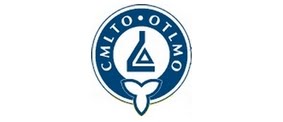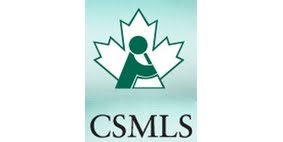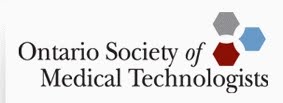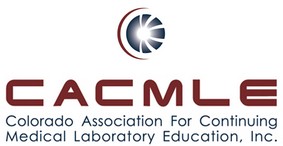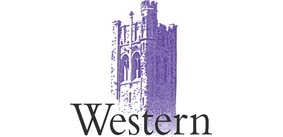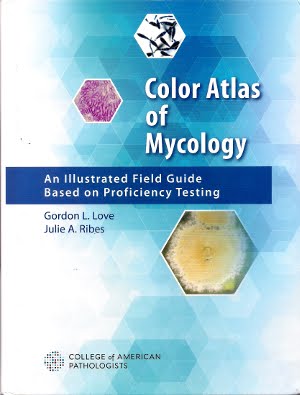Thursday, 21 August 2014
Trichosporon species
Trichosporon species: (Basidiomycetous yeasts)
This post contains three species from the genus Trichosporon. I chose to deal with these together because
of their common elements and that relevant features could be illustrated with a
minimal number of photographs for each.
Included here will be Trichosporon
mucoides, Trichosporon asahii and
Trichosporon inkin.
I’ll add others if and when I come across them in the laboratory.
Generic Description of
Trichosporon:
Ecology: Ubiquitous – found in soil and on
plant material as well as humans and animals.
It may be present as normal flora on the skin, on nails and in the mouth
of humans.
Pathogenicity: Five species of Trichosporon are generally considered to be of clinical
significance, these being T.mucoides,
T.inkin, T.asahii, T.asteroides and T.cutaneum.
Recent molecular studies have altered the taxonomy and with it the species
names associated with various ailments.
The species T.beigelii appears
to be obsolete and may have been composed of the species listed above. Localized systemic as well as disseminated
infections are increasingly being found in immunocompromised patients such as
those with acute leukemia. Most
frequently implicated are T.asahii or
T.mucoides. Other species may be involved in superficial
mycoses. All of these Trichosporon
species have been implicated in a superficial, asymptomatic cosmetic condition
called white piedra. It is characterized
by the presence of relatively soft, white nodules located along the shafts of
hair. T asahii is
considered most closely linked to white piedra, although some authorities
believe T ovoides is the main agent of
white piedra of the scalp while T.inkin prefers the groin area and pubic hairs.
Note: Trichosporon
species initially appear as yeast cells which develop arthroconidia as they
mature. Adhesive tape mounts are of
little value and slide cultures fare only slightly better. The method I employed here in observing Trichophyton was to inoculate a Corn
Meal Agar (CMA) plate by scratching the yeast into the agar surface and
covering it with a cover slip. (The coverslip prevents you from driving your objective into the culture when viewing) After
appropriate incubation, the slide holder can be removed from a microscope and
the arthroconida observed under low power by placing the open agar plate on the
microscope stage and carefully lowering the objective into position.
CAUTION: Make sure you apply a coverslip to the media at the time of inoculation. After appropriate incubation, this allows the culture to be viewed undisturbed. Also, DO NOT use this technique for moulds (filamentous fungi) as the spores will become airborne, enter your nose and cause your head to fall off!!
Microscope with the slide holder removed, incubated plate in place, and objective carefully lowered to view the growth under (and around the edge of) the cover slip. The plate can be carefully moved around by a very steady hand (do this before coffee break!). Objective turret should be raised when placing or removing the plate and when changing objectives. Stick to the lower powers.
* * *
All descriptions below are from Trichosporon species
grown at 30˚C on Sabouraud Dextrose Agar (SAB) or Corn Meal Agar (CMA) as indicated. Corn Meal Agar is used as it is less nutritious than the SAB. With a less favorable nutrition source, the organism may be somewhat more stressed and therefore develop spores, be they blasto or arthro, as a mechanism for dissemination and survival.
Some elements in the photos may appear larger or smaller at the same magnification. This is most likely due to my enlarging, then cropping a photo to emphasize a particular feature.
Trichosporon mucoides:
Macroscopic Morphology: On SAB agar at 30˚C colonies appeared
yeast-like, moderately expanding with a shiny, moist or mucoid appearance
(hence the name). They developed a light
cream-like colour.
Trichosporon mucoides, SAB, 8 Days at 30˚C. Note the mucoid texture, hence the name. (Nikon)
Microscopic Morphology: Initially the cells appear as budding
yeast cells which expand to produce slightly barrel-shaped arthroconidia. Terminal or lateral blastoconidia are present
when mature.
Trichosporon mucoides colony as seen on Corn Meal Agar (CMA) viewed through the microscope as described above. It should be evident that when viewed as described, the cells are unstained. The creamy yeast like forms expand to produce hyphae & pseudo-hyphae (chains of individual cells which mimic hyphae) which grow out from the center of inoculation. (100X, Nikon)
Trichosporon mucoides -edge of the colony growing outwards from the center. The hyphae can be seen to branch. (CMA, 250X, Nikon)
Trichosporon mucoides -a closer look at the hyphae. Branching is evident.
(CMA, 250X, Nikon)
Trichosporon mucoides -hyphae can be seen developing into individual arthrospores along with blastospores along the sides. (CMA, 250X, Nikon)
Trichosporon mucoides -as above (CMA, 250X, Nikon)
Trichosporon mucoides -ditto. (CMA, 250X, Nikon)
Trichosporon mucoides -Chains of arthroconidia (AC) have developed from the hyphae. Lateral blastoconidia (BC) are present, as the name implies, on the sides of the arthconidial chains or hyphae. (CMA, 250X, Nikon)
Note: See also differentiation table at the end of this post.
* * *
Trichosporon asahii:
Macroscopic Morphology: White to light cream coloured colonies
which develop a farinose covering (covered with a whitish, mealy dust) and has
a fissured marginal zone.
Trichosporon asahii - SAB, 72 hours at 30˚C. Culture almost looks mixed with lighter and darker colonies. Colonies appear quite dry in contrast to the Trichosporon mucoides described above.
(Nikon)
Trichosporon asahii - SAB, 30˚C, one week. Again, note the dry wrinkled apperance. The white mealy growth in the heaviest area (Lower right quadrant) is the farinose texture described in the text above. (Nikon)
Different techniques can be used to view all the Trichosporon species. Here I used both the plate method viewed on a microscope withe the slide holder removes, and the adhesive tape technique. Try whatever technique best captures the features that describe the species.
Microscopic Morphology: Again, initial culture appears as
yeast cells which grow to develop barrel-shaped arthroconidia. Budding cells and lateral conidia are absent.
Trichosporon asahii - Initial growth on the CMA plate as viewed through the microscope set-up described above. Fine hyphae can be seen extending out comprising the colony.
(CMA, 100X, Nikon)
Trichosporon asahii -as above but photo taken at edge of the outgrowth.
(CMA, 250X, Nikon)
Trichosporon asahii -Taking a step back, these are the T. asahii yeast cells as they appear taken from the SAB colony plate. It is this form that makes Trichosporon a yeast-like fungus. Trichosporon grows as a yeast, both at room temperature and at 37˚C (not to be confused with a true dimorphic fungus). These yeast grow out forming hyphae or pseudohyphae, fragmenting into arthrospores.
(1000+10X, LPCB, DMD-108)
Trichosporon asahii -edge of a colony as viewed using the adhesive tape method. Not the best method to use because of the yeast-like texture of the colony. Free cells are seen to the left with the edge of the colony to the right.
(100X, LPCB, DMD-108)
Trichosporon asahii -the edge of the colony is to the left in this photo. Extending out from the colony are hyphae and chains of arthroconidia (near top of photo)
(400X, LPCB, DMD-108)
Trichosporon asahii -with a closer view, the difference between the smooth-walled hyphae and the chains of arthroconidia is evident. Here they lie side by side. In the upper right of the photo, the transition of the hyphae as it fragments into arthroconidia is quite evident.
(1000X, LPCB, DMD-108)
Trichosporon asahii -another view, as above.
(1000X, LPCB, DMD-108)
Trichosporon asahii -as above. Regardless of the technique used to observe the fungus, note that there are no lateral blastoconida on T.asahii that we saw on the T.mucoides isolate.
(1000X, LPCB, 1000X)
Trichosporon asahii - Barrel-shaped arthroconidia, but no lateral blastoconidia.
(1000X, LPCB, 1000X)
Trichosporon asahii -a hyphal element running from right to left through the center of the photo can be seen disarticulating (fragmenting) into barrel-shaped arthroconidia.
(1000X, LPCB, DMD-108)
Note: See also differentiation table at the end of this post.
* * *
Trichosporon inkin:
Macroscopic Morphology: Colonies are initially yeast-like,
off-white to cream coloured, smooth, moist and soft in texture. As the colonies mature they become finely
cerebriform (wrinkled), farinose (covered with a whitish, mealy powder) or
crumb-like. The center of the colony may
become heaped up and the aging colony may adhere to and even crack the agar.
Trichosporon inkin -SAB, 30˚C, 72 hours. Off-white, soft cream-like texture
(Nikon)
Microscopic Morphology: Initially the cells are yeast-like
however on incubation true hyphae as well as pseudohyphae develop. Long, cylindrical arthroconidia (2 – 4 µm X 3
– 9 µm) develop as the colony matures.
Blastoconidia may form singly or in short chains, however lateral
conidia are absent. Appressoria (a speciallized
cell which assists the fungus in infection) may be present and best visualized
in slide cultures.
Trichosporon inkin -rather than using the LPCB stain as with the T.asahii (above), here you can see the yeast cells as they appear suspended in ~10% Potassium Hydroxide solution (KOH).
(I have this noted as 400X, KOH, Nikon, but the magnification may be higher -ooops!)
Trichosporon inkin -as with the other Trichosporon species presented above, this is the T.inkin colony producing hyphae and pseudo-hyphae which extend from the point of inoculation.
(CMA, 100X, Nikon)
Trichosporon inkin -a blastoconidium can be seen developing at the end of a hyphae (upper right). Lateral blastoconidia, as seen with T.mucoides, are not produced.
(CMA, 250X, Nikon)
Trichosporon inkin -blastoconida at the apex of the hyphae.
(CMA, 250X, Nikon)
Trichosporon inkin -disarticulation (fragmentation) of the hyphae into arthroconida is seen here.
(CMA, 250X, Nikon)
Trichosporon inkin -branching hyphae & pseudo-hyphae fragmenting into arthroconidia.
(CMA, 250X, Nikon)
Trichosporon inkin -another view as described above.
(CMA, 250X, Nikon)
Trichosporon inkin - and yet another (ditto)
(CMA, 250X, Nikon)
Below is a table of physiological features which will help distinguish between the species presented here.
Differentiation: Trichosporon
differs from Cryptococcus species in
that it produces arthroconidia while Cryptococcus
does not. Trichosporon can be differentiated from Geotrichum in that Geotrichum
does not produce blastoconidia and is urea negative.
Inoculation onto Malt Extract Broth at room temperature
encourages the production of blastoconidia in Trichosporon species. Corn
meal agar may do the same.
* * *
































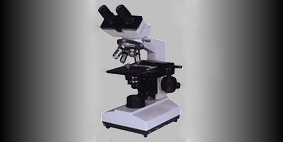.jpg)
